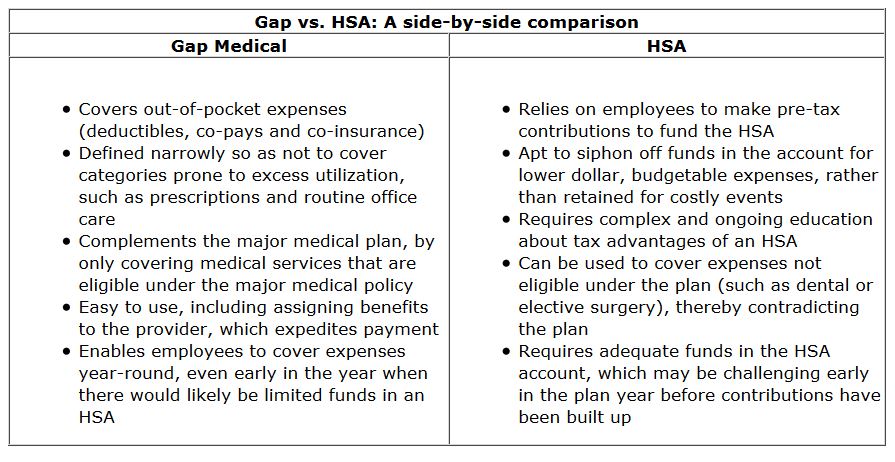Out-of-pocket costs can be a pain in the budget for many employees.
Health savings accounts have traditionally offered employees some relief, but many employees don’t have the means to adequately pre-fund their HSA. That’s why employers are increasingly turning to supplemental medical insurance to fill gaps and provide a solution that works for all employees.
Managing rising deductibles
The percentage of Americans in high-deductible health plans has skyrocketed in recent years, with more than 50 million Americans currently enrolled in these plans. As more employers migrate to high-deductible options, employee participation in those plans is growing exponentially.
Not surprisingly, employees’ out-of-pockets costs are rising as well. Over the past five years, employee responsibility for deductibles, co-pays and co-insurance has increased. Deductibles alone have increased a whopping 86% in this time frame.
Employees are feeling the pain in their pocketbooks, and many struggle to make high-deductible plans work for them and their families. Some have been forced to declare bankruptcy over unpaid medical bills, while others are depleting their savings or forgoing care.
Most employers seeking solutions that help soften employees’ high out-of-pocket expenses have turned to Health Savings Accounts (HSAs).
These tax-advantaged accounts enable employees enrolled in high-deductible health plans to fund their HSA with pre-tax contributions and use those funds to cover their out-of-pocket health expenses.
But, HSAs have their limitations, especially for average wage earners who may not have the means to adequately pre-fund an HSA and may find themselves with medical bills they can’t afford.
Even more financially stable employees may be unlikely to know how much they’d need to save to adequately prepare for an unforeseen medical event, such as a hospitalization or surgery due to an accident or illness. Studies show that three in five Americans don’t have enough money saved to cover the costs of an unexpected medical emergency, typically averaging $1,000.
There are other options. Two out of three employers are now offering supplemental insurance coverages – such as supplemental medical, hospital indemnity and critical illness insurance – to help employees fill gaps.
In particular, true gap medical coverage like supplemental medical insurance can help employees cover eligible out-of-pocket expenses like deductibles, co-pays and co-insurance, when it is provided alongside a high-deductible health plan.
Filling gaps for all employees
Supplemental medical insurance provides a solution for groups seeking plans that will be effective for all of their employees – not just those that can afford to fund an HSA – while also potentially reducing their costs.
This insured supplemental medical option helps employees cover higher cost, non-selectable medical expenses, such as inpatient hospitalization, ER visits, outpatient surgery, diagnostic testing and, in some cases, chemotherapy and radiation.
These plans complement existing medical plans and only cover services that are eligible under the major medical policy. In addition, they typically do not cover costs prone to excess utilization, such as prescriptions or routine office visits.
Not only does supplemental medical insurance provide coverage that works for all employees equally, it also provides them with protection from day one of the plan year.
Many employees who participate in HSAs are often ill-prepared to cover out-of-pocket expenses early in the plan year, because there hasn’t been enough time to build up funds. Conversely, late in the plan year, employees in HSAs may have already used up funds on lower-cost, budgetable items (such as prescriptions), leaving them exposed should they encounter an unexpected and costly health crisis.
Saving time and money for the company
A supplemental medical plan can do even more than save money for employees. When carefully designed in conjunction with the high-deductible plan, these gap plans can also generate plan savings for the company as well.
Here’s how it works: First, employers can increase the deductible to reduce major medical premiums.
From there, they can apply some of that savings toward funding a supplemental medical plan that helps soften the blow for employees by covering eligble out-of-pocket costs like deductibles, co-pays and co-insurance.
A combined major medical and supplemental medical plan not only reduces employees’ financial explosure, it also can help employers achieve significant plan savings (see sample cost savings illustration):
| Current PPO Plan | Total per month | Total premium |
| 2016 PPO Plan | $65,839.75 | $790,077.00 |
| NEW MM + Gap Plan | Total per month | Total premium |
| New Major Medical Plan | $57,763.84 | $693,166.08 |
| +Supplemental Medical | $ 3,969.32 | $ 47,631.84 |
| 2017 MM + Supp Med Plan | $61,733.16 | $740,797.92 |
| Plan savings |
| $ 49,279.08 |
Results: Gap results in a plan savings of 6.2% year over year
In addition to the cost savings, supplemental medical plans can save time for the employer.
HSAs typically require complex employee education on tax-advantages and usage, while gap protection coverages like supplemental medical are relatively simple for employers to implement and for employees to understand and use.
No doubt, HSAs have their place for employees who can adequately set aside pre-tax dollars into these accounts.
But supplemental medical insurance offers more protection for a wide range of employees from day one in the plan year. By reducing their out-of-pocket exposure, these plans fill gaps and offer meaningful financial protection - just when it is needed the most.
Recommended For You
© 2025 ALM Global, LLC, All Rights Reserved. Request academic re-use from www.copyright.com. All other uses, submit a request to [email protected]. For more information visit Asset & Logo Licensing.








